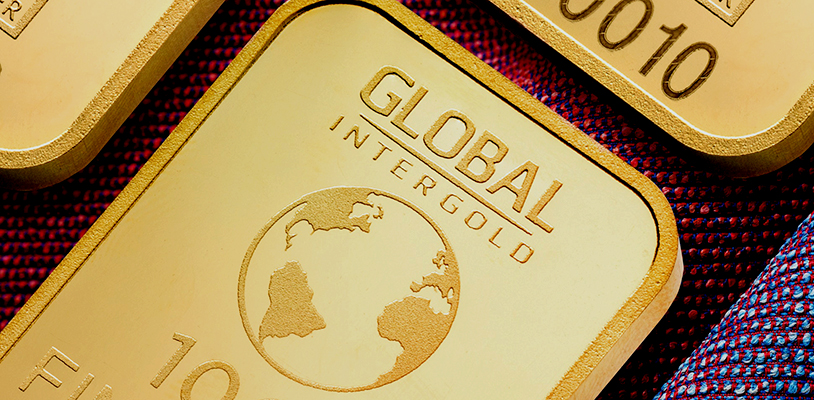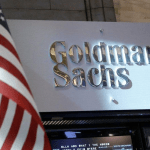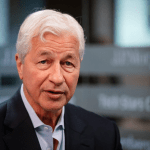As COVID-19 continues to shake up the economy and with most of the world in lockdown, a global recession has already begun with the economy falling faster than in the early days of the financialcrisis and The International Monetary Fund (IMF) predicting that the pandemic will cause the economy to face its worst recession since the Great Depression. While stock markets crash across the globe, gold is moving in the opposite direction, continuing to rise - and recently reached its highest price point since 2012 due to its safe-haven status.
A time-tested asset
Historically, gold has maintained its value over time and built its reputation as a “recession-proof” asset class—largely uncorrelated with traditional market movements and economic fluctuations.
Despite this, in the current period of pandemic, panicked investors are placing bets on cash—the US cash market funds experienced $87.6 billion of inflows in seven days while the Bank of America reported that investors plowed a total of $136.9 billion into cash. It has gotten to the point where some banks were cleaned out of $100 bills as consumers took out large amounts of cash in a bid to protect them from the ongoing stock market crash.
While some believe that “cash is king” during a recession, over a longer period of time the nature of gold is more stable than cash. As banks are now slashing interest rates to encourage spending and boost the economy, so-called ‘idle cash’—is earning less interest. In addition, with inflation, idle cashwill not generate as much return in the long run as its purchasing power may depreciate over time.
This does not apply to physical commodities like gold as it cannot be printed like money and its value is not impacted by a government’s decision to change interest rates or to increase the circulation of a particular currency—making gold a more enticing choice for investors during times of volatility.
Even prior to the COVID-19 pandemic, gold performed exceptionally in economic volatility with an approximate 20% increase in 2019 alone. This is attributed to decreased investor confidence in traditional markets, stretching from stocks and equities right through to government bonds and investments which mere months ago appeared “safe”. This uncertainty is the result of a series of economic and political volatility which unfolded last year—from Hong Kong’s political situation, confusion around Britain's future within the European Union and Brexit, as well as unsettled US-Sinotrade ties, and deteriorating relations between Japan and South Korea.
Historically, gold has maintained its value over time and built its reputation as a “recession-proof” asset class—largely uncorrelated with traditional market movements and economic fluctuations.
Looking beyond 2019, historical data has also shown a similar pattern during the 2008 financial crisis where gold had a small slip during the initial market turmoil but rebounded and outperformed other assets in the following months. We could very well see the same pattern in 2020 as gold prices are now stabilising and rising after the Federal Reserve System (FED) introducing new liquidity injection facilities and the recent drop in interest rates.
Surging demand
Betting on gold’s performance as a safe-haven asset, panicked investors around the world are rushing to purchase this shiny metal, causing gold dealers to suffer shortages as a result of the surging demand and supply disruptions. Three of the world’s largest gold refineries – who together produce one-third of the world’s gold supply – have recently reopened and will continue to operate at 50% reduced capacity after being suspended for two weeks. It means that the supply for gold is now lower than before – making it more difficult for investors to access this precious metal.
Even before the pandemic, the process of purchasing and owning gold traditionally has proven prohibitive for some individual investors. Gold has traditionally been a negative-yielding instrument where investors have to pay to store, insure, and secure the asset, meaning that the purchasing and holding gold has historically been in the exclusive domain of traditional financial institutions and high-net-worth individuals (HNWIs) who can afford to pay for custodianship.
While there is now an increased demand for gold worldwide, the challenges to acquire this shiny metal have also increased.
Putting gold in the digital realm - a new, better form of gold
With the surging demand for this precious metal, the gold industry has evolved alongside technological advancements and the mass digitisation of the financial sector. The emergence of digital assets has given gold a new channel to shine in this digital space and has presented investors of every kind with a new way to purchase gold. One way is through “digital gold” - a digital token that is backed by actual gold bullions.
In light of the ongoing outbreak measures, the issues of physical gold are becoming apparent and extending beyond a lack of supply to deeper logistical nightmares - with gold dealers being unable to move gold across borders - or even out of the vault - as gold doesn’t come under essential items, causing delivery delays and gold funds to come to a complete halt. Mobility limitations can be solved by placing gold on the digital realm - allowing anyone with an internet connection to trade gold online without the inconvenience associated with storing, carrying, and moving gold. Digital gold enables gold to be transferred across international borders as easily as sending an online payment or a bank transfer - opening up the gold markets to globalisation and providing investors with greater utility and liquidity by reducing the barriers of entry to the gold market, allowing anyone to trade, spend, hold, and microinvest their savings into the world’s most time-tested asset class.
Even prior to the COVID-19 pandemic, gold performed exceptionally in economic volatility with an approximate 20% increase in 2019 alone.
However, anything placed in the digital realm opens itself to hacks, and the number of cyber threats has risen by 37% in March 2020 - with the average daily number of hacking and phishing attempts increasing by up to six times than the period before the pandemic. Trust, security, and data management remain a huge concern as there is a chance that sensitive data stored in centralised servers may be altered, misused, or stolen by malicious parties.
One way to combat cyberattacks is through blockchain, as the decentralised and immutable nature of the technology ensures that data remains unalterable and tamper-proof. A decentralised ledger system allows information to remain transparent while also maintaining a high level of data integrity. In essence, the distributed nature of blockchain provides no “hackable” entrance or point of failure that detrimentally exposes entire datasets. By applying this to digital gold, asset holders can maintain full visibility over their assets, transaction history, and even track inventory records while this data remains unalterable and tamper-proof through blockchain technology.
As COVID-19 exposes issues of mobility, convenience and accessibility in the traditional gold market, it opens an opportunity for the market to reinvent and future proof itself for the years to come. Although digital gold remains a new concept for many, it has the potential to not only help the gold industry evolve but also open up new possibilities across the financial ecosystem in a “post-COVID-19 world”.
Shaun Djie, COO & Co-Founder of Digix
Shaun Djie is the Co-founder of DigixGlobal and the Founder of the Ethereum Singapore meetup group. Shaun is currently a Technical Committee Board Member at the IT Standards Committee, organised by IMDA and Enterprise Singapore for Blockchain and Distributed Ledger Technologies, ISO/TC 307. Shaun is also a Regional Partner at Kenetic Capital, an institutional platform for blockchain advisory, technology and investment. He’s the co-author of Cryptocurrency Wizards (2018), a first of its kind book that covers the testimonials of movers and shakers in the Asian cryptocurrency ecosystem.













